The Ultimate Guide How to Travel With A Cat by Plane, Train & Car
How To Travel With A Cat by Travel Cat Community Member & Cat Lover Jenny Hart
Contrary to popular belief, cats can make excellent travel companions. Yes, they are creatures of comfort who value their territory and routines, but with a bit of mindfulness and advance preparation, it’s fairly easy to have them join you on any journey… even one that takes hours, days, weeks, or longer!
As a frequent world traveler, some of the best vacations I’ve ever had were with my cat, Rajah, by my side. We’ve traversed the four corners of our country and beyond by plane, train and automobile, and have learned so much that we’re thrilled to share with the Travel Cat community.
Whether your cat is a full-blown adventurer or more of a homebody (my cat’s personality is somewhere in between, for what it’s worth!), keeping their comfort in mind is the most important factor for a successful cat-friendly trip. Here’s everything you need to know about how to travel long distance with a cat by car, train, and plane.
How to travel long distances with a cat in the car:
Car travel is the most common -- and most recommended -- way to travel with your cat. While the journey may take a long time depending on the destination, you’ll have the most control over how the trip goes, ensuring your cat’s safety and comfort every step of the way.
Figure out the details of your journey.
The first thing to do, before you start fretting about and prepping your cat for travel, is to figure out the details of your journey. Where are you going? How long will it take you to get there? Will you be staying overnight? If so, where are you going to stay, and for how long? How are you getting back home? The more prepared you are with details in advance, the easier it will be to plan for and accommodate your cat’s role on the trip.
Take practice drives in the car.
If your cat has only ever traveled to the vet, then a two-hour car drive may seem like a long-haul journey for them, and for you! But there’s also far less necessary prep for a car ride of that length than one that will take 12 hours. Read our guide to road tripping with your cat here and follow these tips as you prepare for your drive:
Get your cat used to a cat backpack carrier.
It's imperative that your cat is comfortable in their carrier, as they will be spending a lot of time inside of it throughout your trip. We offer a lot of resources on our website about how to make them feel like it’s a home away from home. Check them out!
We also offer a number of cat backpacks for every size, style, and situation. For example, check out "The Navigator" Earth Convertible Cat Backpack if you want to take your fur baby hiking.

Get your cat used to peeing outside.
This tip is especially important for cats who tend to stick to the great indoors! Cats are creatures of habit; how and where they do their "business" is no exception. When you travel with your cat, your cat will have to relieve themselves either outside or in a litter box that isn’t in their special corner at home. This can be quite shocking for some cats, and may result in them holding their pee for as long as they can, until they are somewhere where they feel more comfortable. It isn't healthy for cats to hold it in for too long, so before you go on your trip, try to get your cat to use the bathroom outside or bring along our seamless, travel porta pawty litter box!
Best Practices for Keeping Your Cats Safe on the Road:
Get a comfortable and sturdy carrier for your cat to ride in.
This is the first and most important step to keeping them safe in the car. I have and use "The Jackson Galaxy" Convertible Cat Backpack because it is spacious enough when positioned upright for my cat to stand, move around, or curl up, and it also converts to a horizontal carrier, which then allows him to really stretch out and get cozy during longer trips. I also recently purchased "The Navigator" Cat Backpack for Adventure Cats to have as an alternate carrier because of its extra airy, mesh material. Cats can’t regulate their temperature the same way humans do, and can be put at risk of overheating if the air circulation in your car isn’t great. It’s important to always keep the temperature inside your car at a comfortable level, but if it seems like your kitty is still getting too warm (they will often start panting like dogs when this is the case), you can unzip the top of the cat backpack (so long as your cat is safely harnessed and clipped in!) so they can pop their head out for some fresh air.
Position your carrier safely in the car.
I will sometimes secure my cat’s backpack carrier differently depending on how long our ride is and who else is in the car with us. My go-to, ideal positioning is to have the cat backpack upright on the floor of the car, and if I’m in the passenger seat, in between my legs where I’m buckled in. Placing the carrier on the floor of the car is more secure than on the seat, where it can slide or even tip over, and having it between your legs gives extra support. You're also better able to keep your eye on the furball to make sure they’re happy and OK, and give them a quick pet when needed. If I’m riding in a packed car, Rajah and I both feel more comfortable having his cat backpack on the middle seat (between two passengers) or on my lap in the backseat. Too many legs makes his previous position on the floor cramped, and having the backpack snug between two bodies will prevent it from moving while the car’s in motion. He’s also more relaxed when at eye level, and so is more likely to nap the entire journey when riding this way. You can buckle the carrier in for extra protection.
Be smart when you let your cat out of the carrier.
While it's normal for your cat to want a break from their carrier, please know that it can be dangerous for them to be outside of a carrier while the car is in motion; they'd be less protected should there be an accident. (Think of it as your cat not wearing a seatbelt!) There is also the risk of a roaming cat becoming a dangerous distraction for the car's driver, especially since cats tend to be drawn to the floor where the car’s pedals are! If we’re parked for a while at a rest stop, I will let Rajah explore the car a bit (he loves to lay on the dashboard!), so long as he’s wearing his "The True Adventurer" Reflective Cat & Kitten Harness attached to "The Captain" Retractable Leash for Cats. That way, if someone were to open the car door and startle him, there’s no risk of him running outside of the car and getting lost.
How to keep your cat comfortable during long drives:
As mentioned before, any car ride that’s significantly longer than average, whether that’s by a couple hours or couple days, can be a major adjustment -- and potential stressor -- for your kitty. Thankfully, there are several ways to prepare and things to keep in mind that will make it an easier and more enjoyable experience for you both.
What should you pack for your cat?
Make sure you pack the kitty essentials! If your cat has favorite items that keep them happy, don’t forget them! Whether it’s a special type of treat, their favorite blanket, or a beloved toy, this is the key to keeping your cat comfortable in their new environment. You may want to bring along something like a portable cat scratcher (to use once you reach your destination, not in the car or on the plane!) or a play tent so you can let your cat safely enjoy the outdoors. You must pack enough food and water for your furry feline, as well, in order to avoid a hangry traveler.
How long can cats hold their poop/pee?
You should take multiple breaks to keep your cat happy. Cats can often hold off on going to the bathroom for a long time and only use the bathroom around four times a day. However, I still make sure to take many breaks because the longer the car ride, the more likely my cat is to start to get antsy in his carrier. If he’s squirming a lot and trying to exit the cat backpack, I’ll wait until we’re stopped to reach down, pick him up, and put him on my lap for a short break. He loves to get kisses, stretch his legs, and look out the window while sitting on my lap!
How do you deal with travel anxiety?
Some cats will still feel uneasy on the road, even after they’ve become accustomed to their carrier and are joined by their favorite items. We often are asked, “Should I sedate my cat for travel?” and while we are not veterinarians (please do consult your vet if you are considering this option), we would say “no.” There are plenty of other options that are safer, easier, and more holistic than sedating your cat: we are big fans of Easy Traveler: An All-Natural Holistic Solution by Jackson Galaxy. This tincture is a blend of flower essences, and can ease the fear, anxiety, and stress that results from travel, as well as help relieve motion sickness! Though he usually doesn’t need it, I keep a bottle of the Easy Traveler solution in the side pocket of Rajah’s backpack; it’s very helpful to have on hand for moments that cause him a bit more stress than usual. We’ve also found CBD oil and pheromone spray to be quite useful.
Should you cover your cat carrier?
One great tip is to pack your cat’s favorite blanket in the carrier with them. It will act as a scent soaker, reminding them of home and calming their nerves, and will also be nice for them to snuggle with while napping inside. If your cat continues to be a little anxious while in the car, it can then be very useful to take the blanket and cover the carrier with it. Cats’ natural instinct is to hide somewhere dark and protected when they are scared; this use of their cozy blanket will make their carrier feel like a cave, which will in turn help them feel safer and more secure while on the road.
Do you put a litter box in a cat carrier?
You don’t need to put a litter box inside your carrier, but you can set up a portable one inside the car. When it comes to necessary potty breaks, cat owners are lucky: most cats can hold their urine for up to 24 to even 48 hours, so it’s unlikely that your fur baby will need to go while in the car, and even more unlikely that they’ll have an accident. That said, it’s important to have a plan in case of either possibility. I’ve been asked before if I put a litter box inside my cat carrier, and the answer is “no.” When Rajah needs to go, he lets me know, and I set up his "The Porta-Pawty" Travel Litter Box - Portable Bathroom for Cats.
Before finding The Porta-Pawty, we tried every travel litter box known to man, and man, is this one my favorite. I love that it folds up small when empty for easy packing, and when full, I can zip it closed to keep in the smell and prevent spilling. I can’t stress enough how important it is to have a good travel litter box if you are going to travel long distances with your cat. A friend once told me how she attempted to use an empty shoebox as her cat’s litter box; after one use, it smelled so bad that her cat wouldn’t go near it again! Don’t make that mistake.
If your cat is a more frequent urinator and you’re afraid of potential accidents, we recommend lining the bottom of your cat backpack with a pee pad, and then covering it with a folded crocheted blanket. That way, if Fluffy lets out an accidental tinkle, it will fall through the holes of the crocheted blanket and be absorbed by the pad, preventing messy cleanup for you, and potential discomfort for your pet by needing to sit on top of their own filth.
How to travel long distances with a cat on a train:
Train travel can be really fun, and most train lines are relatively welcoming of pets! The rules, however, can be a little stricter than you’d expect.
Train travel tends to be less expensive than airlines when it comes to bringing your furry companion. As we’re from the United States, Rajah and I are frequent riders of Amtrak, the country’s signature passenger rail service. Amtrak’s pet fee is just $26 USD, which is A LOT more reasonable than the $100+ price tags we see with most major airlines. A maximum of five pets (not including service animals) are allowed on each train, so if you’re intending to travel during a busy time, it’s best to book space for both you and your cat in advance.
Check with your train’s policy on cat carriers.
There’s usually a specific weight you have to follow. With Amtrak, the animal AND carrier are to weigh within 20 lbs, combined. My cat weighs about 12 lbs and the cat backpack carriers are fairly lightweight, so we’ve always been in the limit… but that said, I’ve never had anyone ask to weigh or even inspect the size of my cat. It’s my belief that this rule is in effect to dissuade passengers from trying to bring their medium or large sized dogs on board, so slightly chunky cats should not be too concerned.
A good option for train travel is the "The Boop Coop" Collapsible Travel Cat Crate & Carrier, as it’s sturdy but can be stored without taking up much space.

Many trains require that a pet release form be signed prior to departure, acknowledging that you are fully responsible for your animal while on board. It is suggested to arrive at least 30 minutes prior to departure to ensure you have time to sign and submit the form. I usually print and sign the form in advance, however, and there’s usually not much of a line at the ticket office (not to mention no complicated security line, like at airports), so if you happen to arrive only 15 minutes in advance (something we may or may not have done a couple times…), you’ll be totally fine.
Familiarize yourself with the rules
All pets -- both cats and dogs -- need to be kept in their carriers for the duration of the train ride. Many trains do not honor emotional support animal paperwork that may otherwise allow you to have your cat on your lap. Most of the time you can only have one pet per passenger, so if you’re parent to multiple fur babies, make sure you have a human travel companion with you, as well.
Perhaps the biggest rule to keep in mind when planning long distance train travel with your cat is that some trains have a time limit on how long animals are allowed to be on board. While the maximum can be several hours on a train, your cat would likely be jonesing for a break from their carrier! It can be a bit prohibitive, though, as trains tend to travel slower than you think.
The maximum time on a train doesn’t get you extremely far and it may make more sense to fly during long trips. For example, Rajah and I were once planning a trip to Portland, Maine, from our home in New York City. Since the journey would have taken us through scenic New England, I thought it would be wonderful for us to take the train. While it now appears that you can make the trip in about six hours, the only options available to us at the time were just a hair over seven.
Since I technically couldn’t book New York to Portland straight, I looked at the option of breaking the trip up into two legs: New York to Boston, then Boston to Portland, with an overnight layover in between. It ultimately ended up being far too complicated, expensive, and long of a trip (it would’ve taken us over 24 hours to get there!), so I caved and booked us on a 1-hour flight instead.
How to travel with a cat on a plane:
Flying with your cat is much easier than you may think! We wrote the ultimate guide to flying with your cat as a way to answer any and every question you may have. Give that a read for some in-depth info, and take note of these important tips:
Check the plane’s policy about pets as carry-ons
Most of the time, your cat will be allowed on the flight with an extra fee (usually around $100 - $200). With that said, you should call the airline beforehand as there is a limited number of animals allowed on flights. You should also check if they allow pet carriers onboard, or if you have to check your cat. While this is allowed, I strongly recommend not checking your cat as luggage unless you absolutely have to. This can be traumatizing for the cat!
Make sure your carrier is size compliant
To ease your worries, we compiled a list of carrier requirements for the top U.S. airlines, and we are happy to report that most of our cat backpacks make the cut—including our carrier designed specifically for air travel, "The Odyssey" Soft Cat Carrier. Every airline is different, though, so do your research in advance to make sure your carrier fits. For example, if an airline says that your beloved "The Fat Cat" Cat Backpack - For Larger Cats is too large, then it might make sense to snag the slightly shorter "The Transpurrter" Calming Convertible Cat Carrier.
Even still, every plane can be different, too. My cat always flies with all the items from The Jackson Galaxy Essential Bundle: Cat Backpack, Harness, Leash, and Travel Bowl, and only once did I have a problem. We were flying American Airlines and had a connecting flight. Though we fly American often and had never before had an issue with the size of his backpack (including on our first flight that day!), our connecting flight was on a much older plane, and I was seated in a passenger seat that had a bar running down the middle of my underseat storage space. I frankly don’t think ANY cat carrier would have properly fit given the seat’s strange design, but I experienced a bit of pushback from the flight attendant, who needed to ensure that it would.
Luckily, I figured out a solution: the top of the cat backpack is more narrow than the bottom, so by flipping it around and putting the top side under the seat first, I was able to get the backpack to fit well enough for takeoff. Though my cat, who is normally very relaxed on airplanes, was confused why he could no longer see me, putting my fingers in the backpack’s air holes to pet his face helped calm his nerves.
Check your airline’s requirements
Other than the size of carry-ons and bringing your cat on the flight, there are also requirements for the age and breed. Most airlines require that your cat is at least between 10-15 weeks old, but each airline is different. They also restrict the breed due to the characteristics of the cat. Certain breeds have snub noses, which can cause difficulty breathing in the air. Some cats, such as Burmese, Persian, and Himalayan, are not allowed, but make sure to check with your airline on their policies.
Make sure your cat’s vaccinations up-to-date
It is VERY important that your cat’s rabies vaccination has not expired. They won’t be allowed to fly with you, if so! Your airline may require you to show their vaccination record upon check-in at the airport, so be sure to print it out ahead of time and have it on you. Depending on where you’re flying, there may be additional regulations on vaccinations. This is especially true if you’re heading to an international destination. Research the destination’s requirements well enough in advance, so that you can schedule a vet visit, if need be, to get all of the paperwork that’ll be required.
All in all, once you learn how to travel with a cat, your travel endeavors become significantly better.
Whether you’re a stressful traveler or afraid of flights, your cat is a perfect companion to keep you company. My cat provides me with endless entertainment during layovers, delayed trains, and traffic. With the right precautions and supplies, the trip can always be made cat-friendly. Instead of leaving your cat at home with enough food to supply them for a week, explore the world with your kitty by your side. You won’t have to worry about your cat eating all the food in one day or finding a (probably purposeful) “surprise” outside the litter box once you come back. Bringing my vagabond cat along for the adventure was the best decision I’ve ever made.
SHOP CUSTOMER FAVORITES
MORE CAT TRAVEL RESOURCES & FUN

How to Get Your Cat to Love the Stroller
(Without bribes, begging, or betrayal) Let’s face it — cats aren’t known for embracing change. New toys? Suspicious. Rearranged furniture? Offensive. So when it comes to something as bold as a cat ...
Read more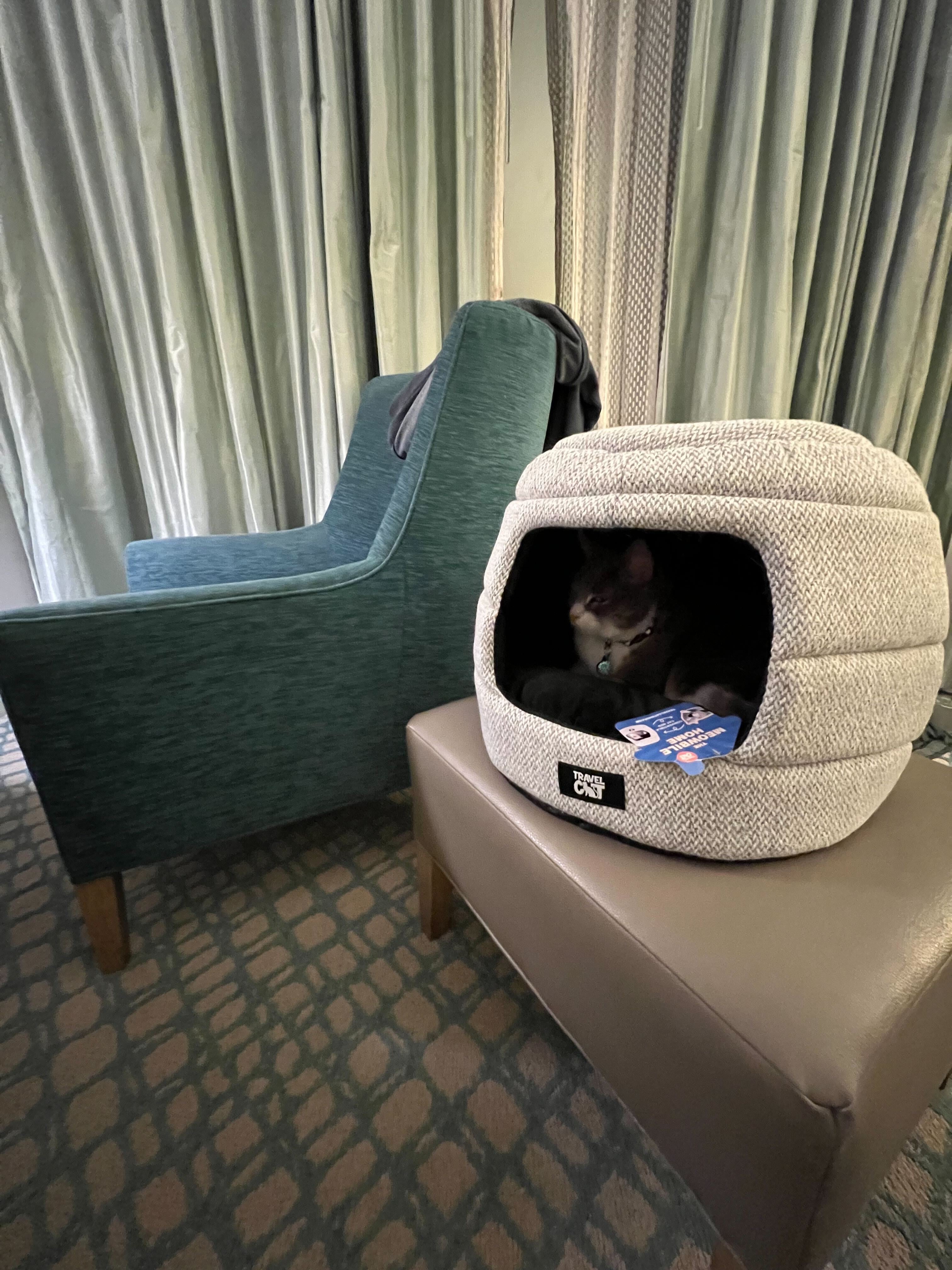
The Ultimate List of Cat-Friendly Hotels in the U.S. - More Than Just Pet-Friendly
Discover the best U.S. hotels that truly welcome cats. From big chains to campsites, this is the ultimate cat-friendly stay guide.
Read more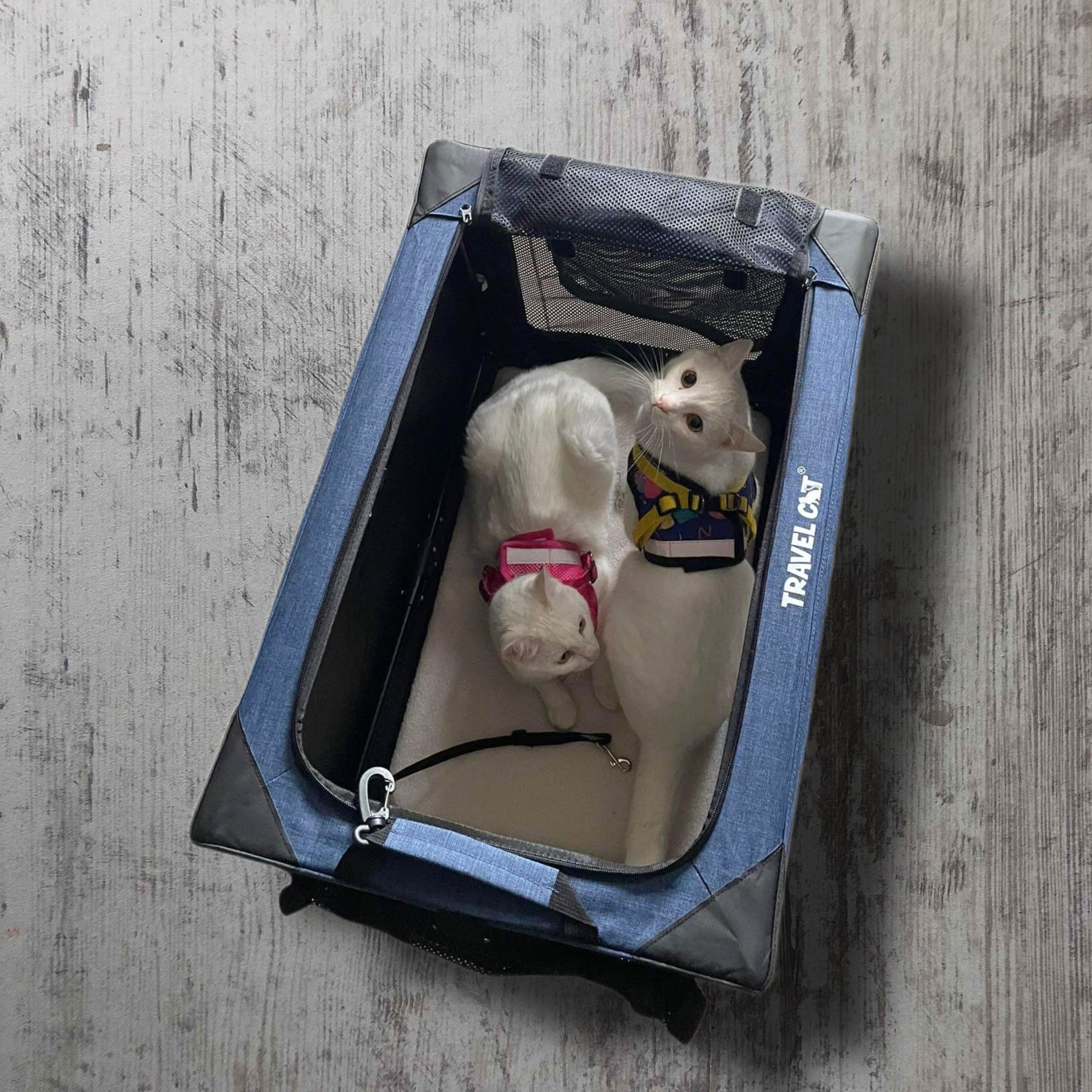
Your Purrfect Guide to Holiday Travel with a Cat: How to Take Your Pet with You Stress-Free
Whether you’re heading home or to a far off vacation, bringing your kitty along can be a challenge. But don’t worry—we’ve put together some trusty tips for traveling with your cat during the holidays.
Read more

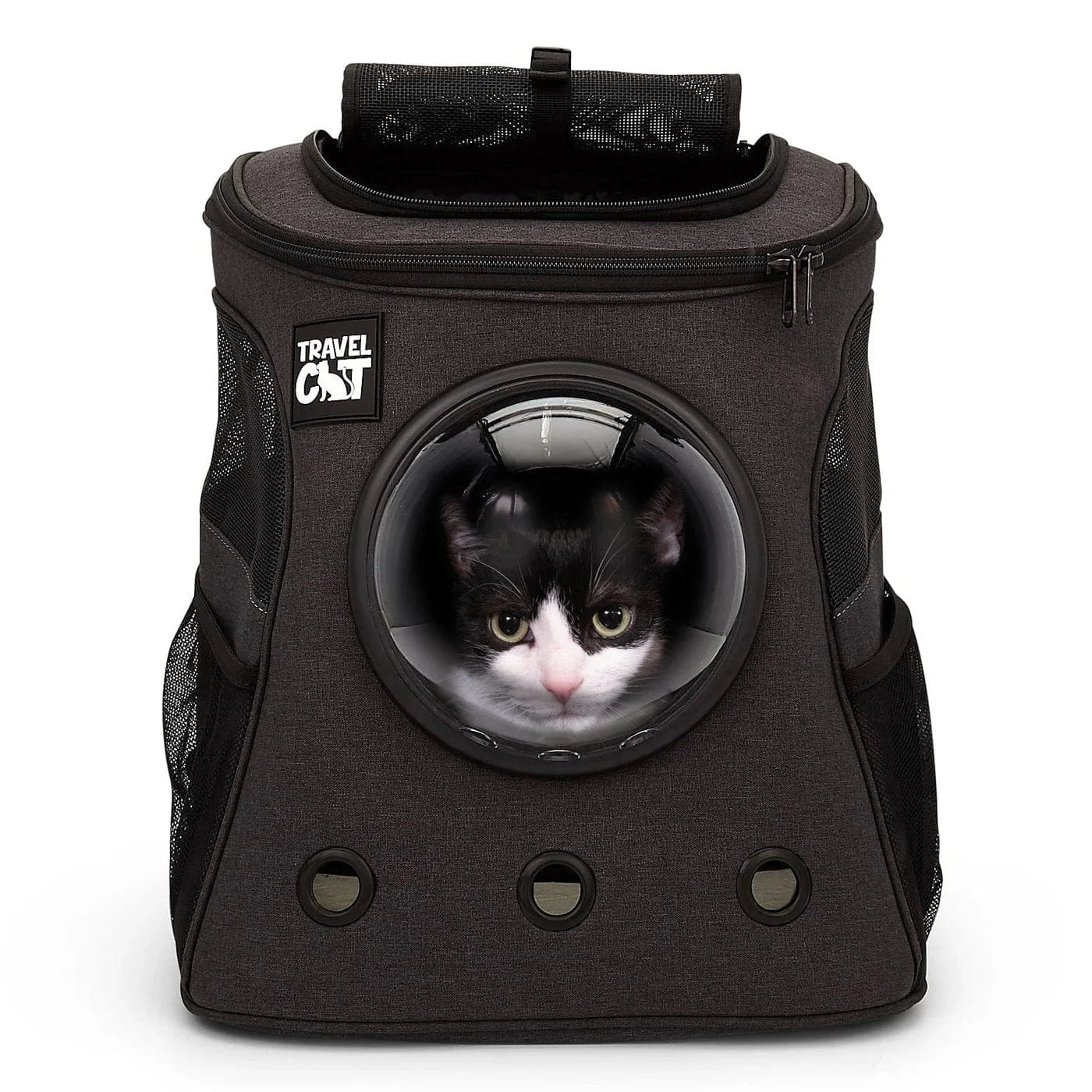







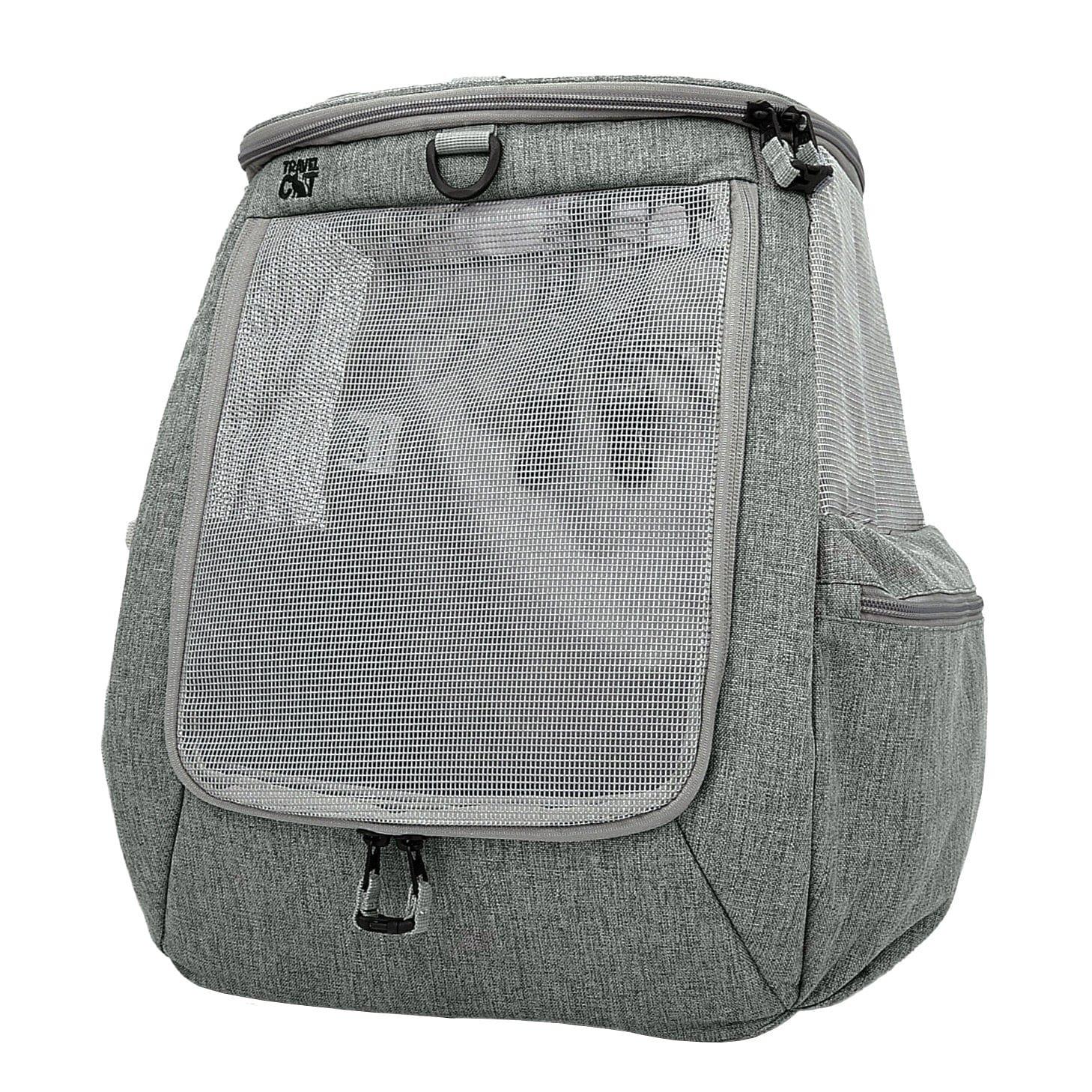
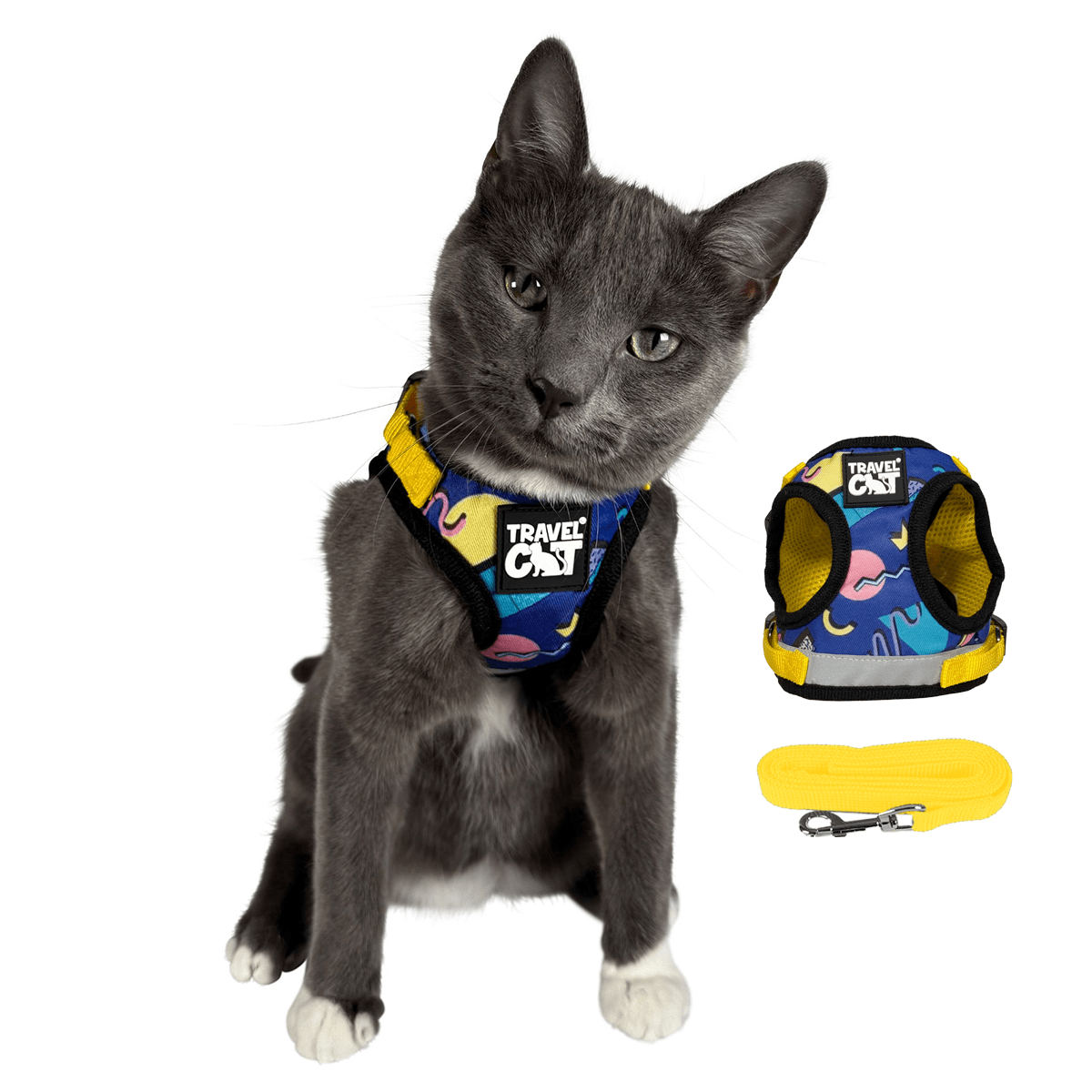
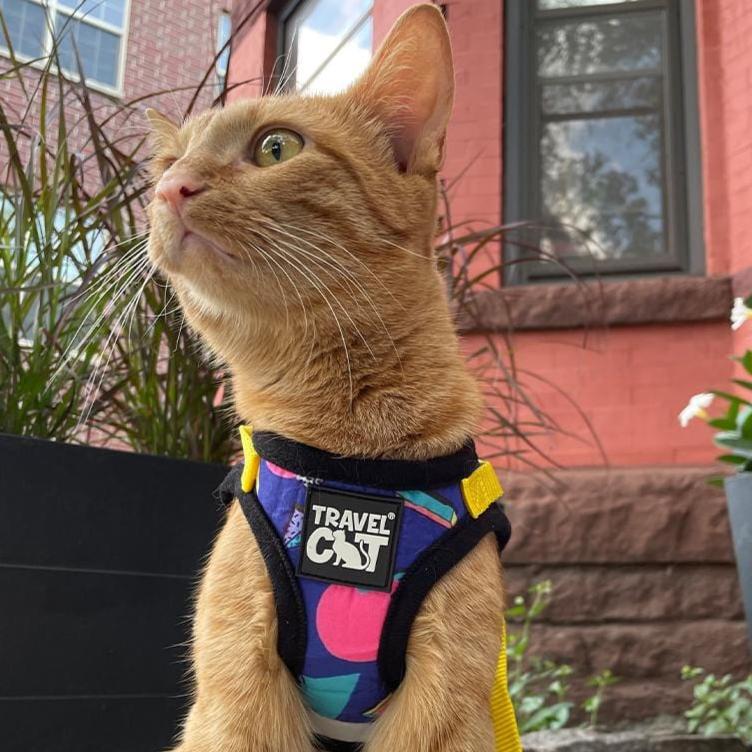

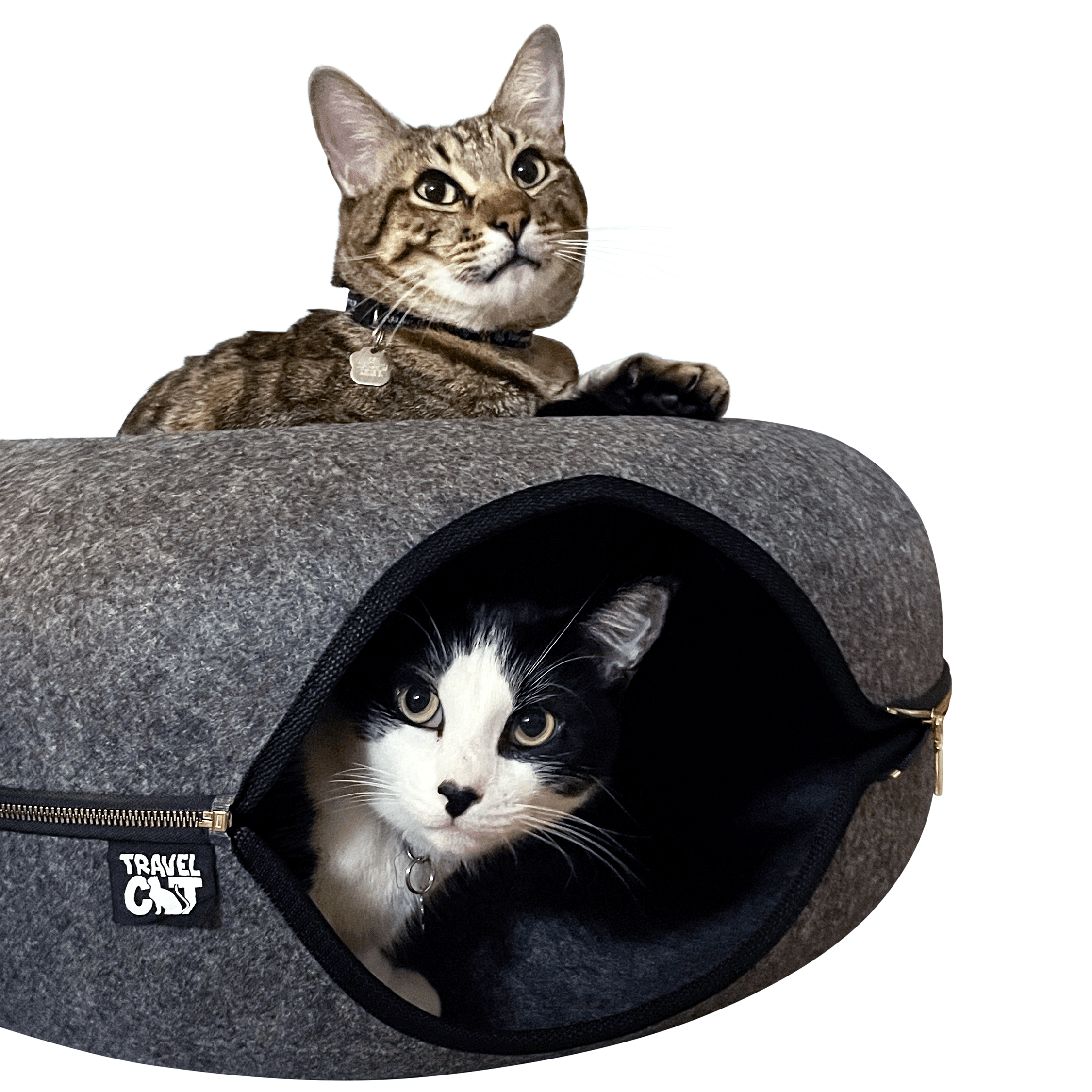

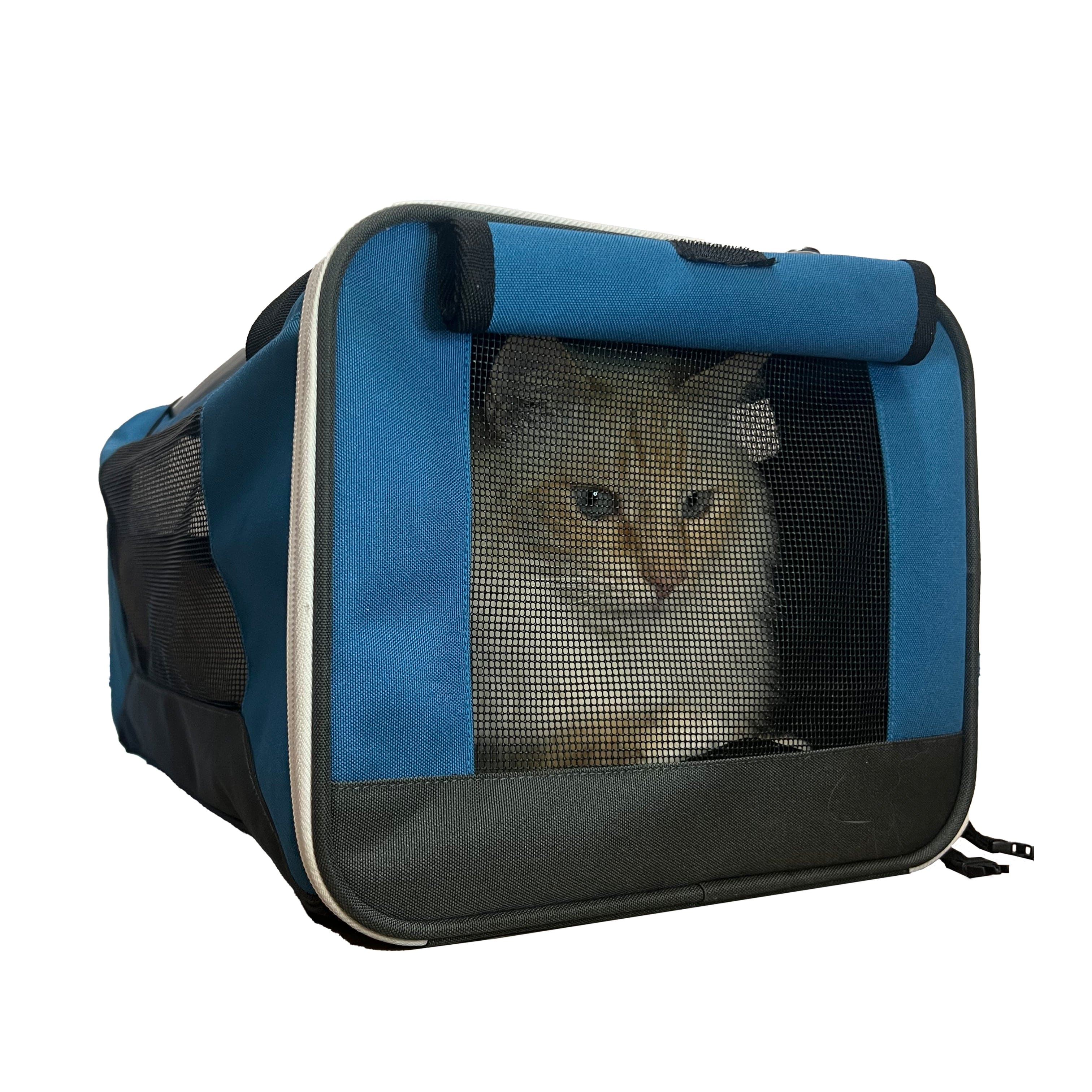
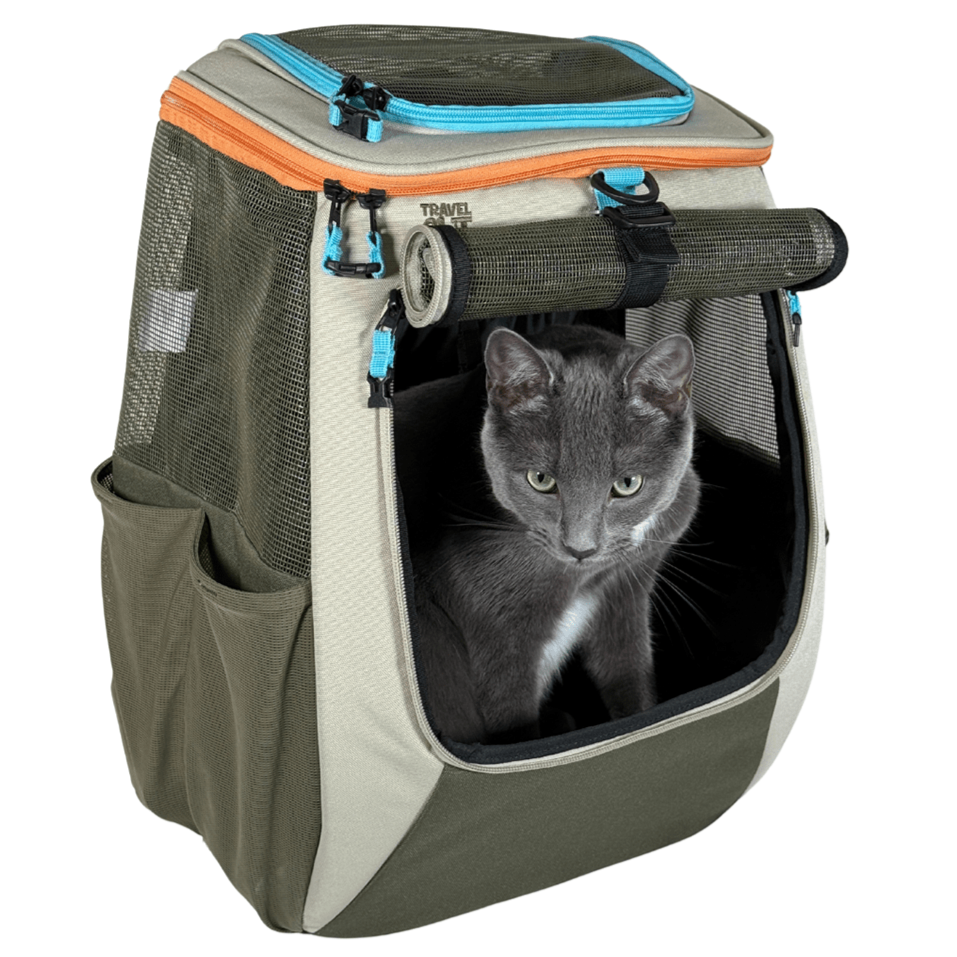
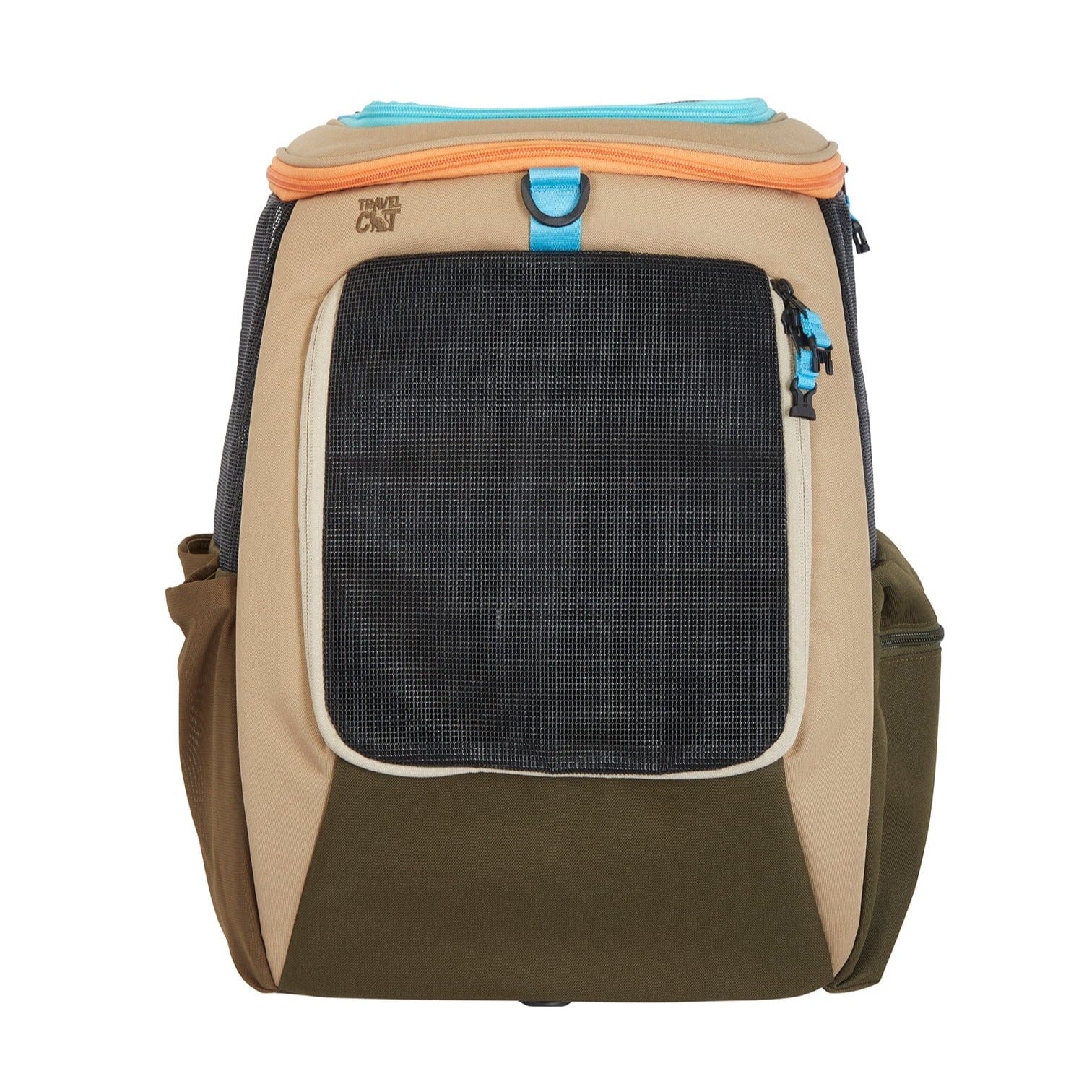

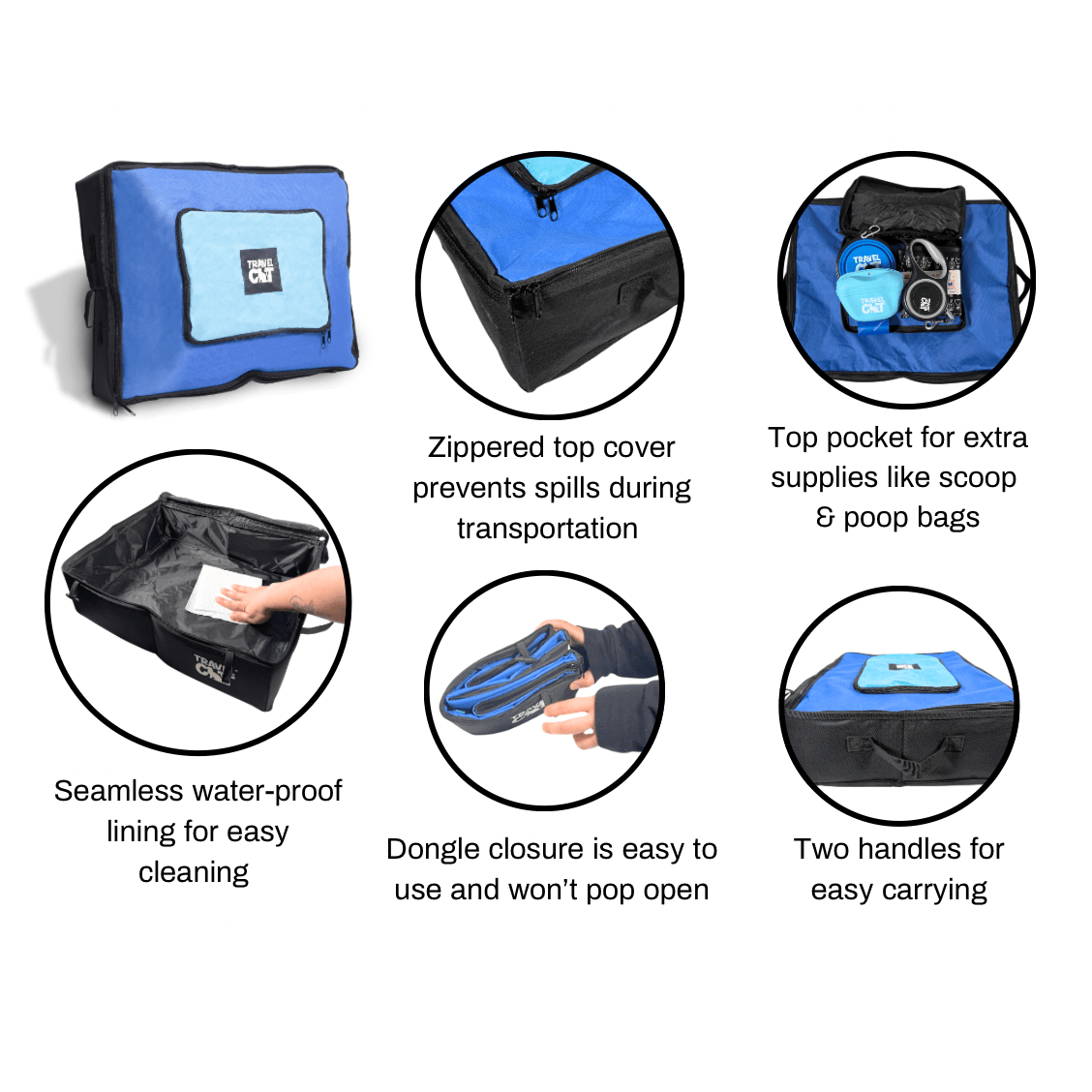


1 comment
Hi. I have a baby kitten. At what age can I start taking her to new places?
Laura Steckler
Leave a comment
This site is protected by hCaptcha and the hCaptcha Privacy Policy and Terms of Service apply.